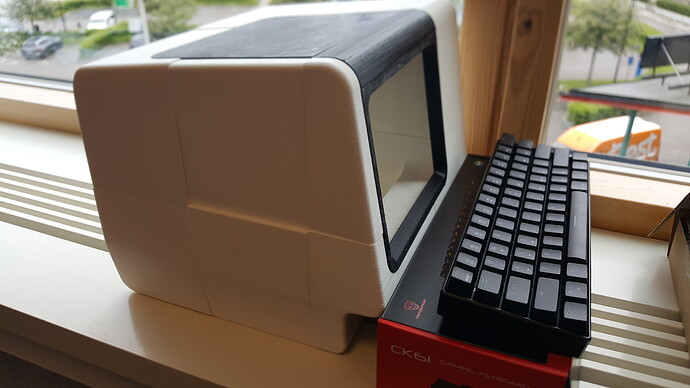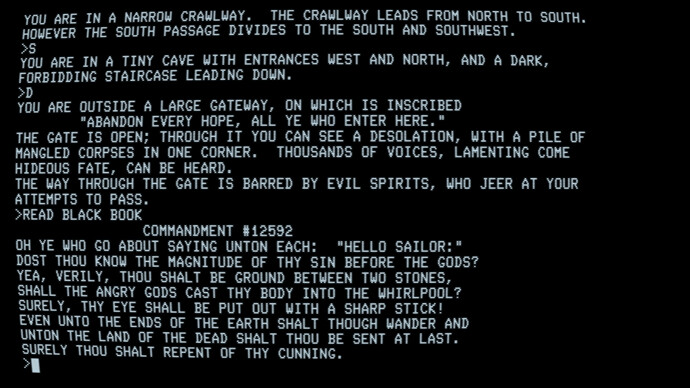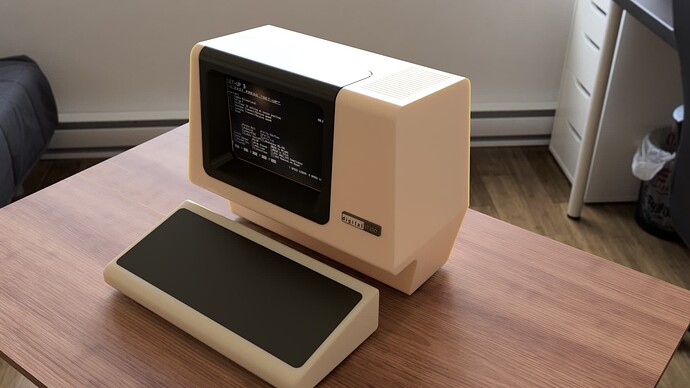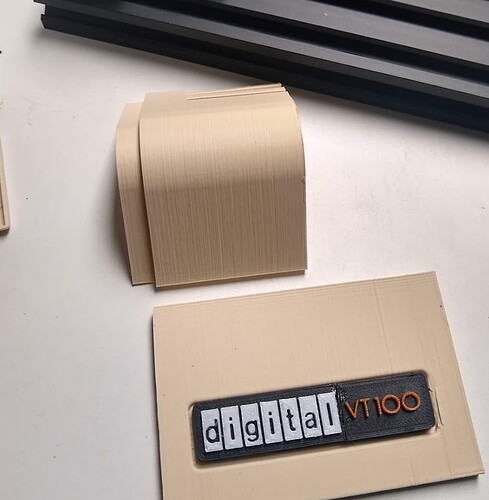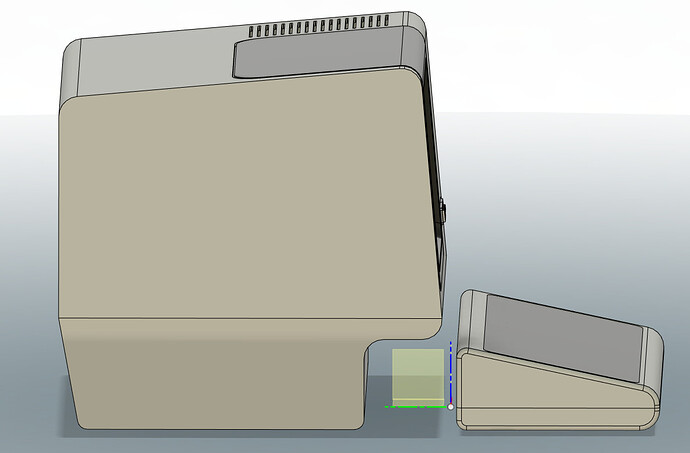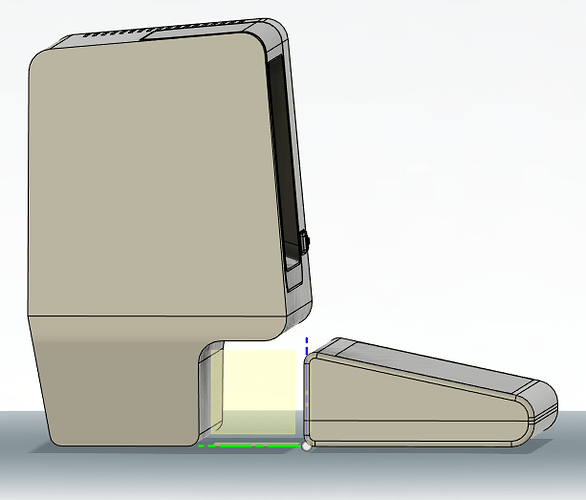Regarding the quack, it may be interesting, if this also works with Bell + ASCII 127 (0x7F), meaning, it’s a canceled bell sound. (Mind that all bits set is traditionally “delete” – as on paper tape.)
It may be intentional, or it may be just about the sound generation being delayed by an attempt to cancel a non-cancelable, which is the bell sound.
I don’t have anything concrete to offer, sorry, but I do remember some terminals, could have been Televideo… or CIT?, having something similar if you had file with BELs and they followed each other “too fast”, one got sort “strangulated bell” one started but then another started and cut off the first one, which resulted in a strange sound effect… but I wouldn’t call that a “quack”.
Would it be possible/desirable to 3D print a keyboard? I’m thinking that you have a boring USB keyboard inside the shell, and the 3D printed keys are simply “fakes” with square rods that directly rest on the “real” keys underneath. The upper side of the shell has hollow posts for the rods.
The point is, you can get the key shapes you want, but you don’t need to mess around with springs or the electronics.
I think that should be possible, but then I don’t know anything about CAD or mechanical design. (The 3D model I’m using was made by someone else, Michael Gardi.)
I was also inspired by the 2/3 scale vt100, but to make a 1:1 model, and then shorten it. Currently it’s just a model in CAD and some test parts, but nearly ready to print. I used various reference images and the technical manual to make the model, adjusted to accept an 11-inch LCD panel. I have the basics of a keyboard PCB to go with it, too.
It’d be really nice to figure out some sort of combination of your emulator and Circle/pigfx to get an instant-booting terminal!  I suppose it would be a new backend driver for SDL.
I suppose it would be a new backend driver for SDL.
Mainly waiting for me to get my printer to a state where I trust it to print reliably for multiple days.
This looks quite good! The form factor looks a bit … unusual, but I can see the appeal of reducing the considerable bulk of a 1:1 VT100. I should know because I acquired a real terminal. I’d be happy to send you some measurements of the real thing if you need them.
I’m very interested in your 1:1 keyboard with PCB! Michael Gardi’s 2:3 model is cute, but the keyboard inside is somewhat quirky.
Yeah, basically it’s all the normal dimensions apart from the length of the top edge. Everything else is done proportionally, so that the bezel goes halfway across the top, whatever that distance is (305mm in a real vt100, 150mm for mine). I’m not 100% sure it won’t fall over, but I want it to fit on a shelf, and that is all just dead space in the back, even with a cluster of raspberry pi’s or dozens on fpgas inside  I suspect I’ll want to put a brick in the bottom or something.
I suspect I’ll want to put a brick in the bottom or something.
The next project could be one of DEC’s computers in VT100 case.
VT103, VT180,VT278. PDP11 Z80? PDP8
For the keyboard, I have a layout in KLE. I will be getting keycaps from WASD, but they only do legends on shapes and colours they already have. The Enter key is not such a shape, so at the moment, I’m planning on it being two keys. Keyboard Layout Editor
There are various tools around to generate PCB schematics (ready to route), QMK firmware and other things from this KLE data.
You don’t get a huge choice in the key profile though, unless you are buying significant volumes (I think it was at least 50-100 sets for it to make sense from Signature Plastics, for example, when I asked them - I like SA profile). WASD use a modern OEM-style profile.
A standard USB keyboard doesn’t support enough LEDs for the VT100 keyboard - I am thinking it would be a separate USB device, although I have never run across software that uses L1-L4, either.
Your full-width model looks great, really close. There are some minor details that could be adjusted though. I think the top bezel goes a little more than half way. The back has a little more lean to it. Etc. It’s hard to quantify exactly, but I could send you some photos if you like.
I do have quite a big collection of photos here but I think I must have got the straight back from the Technical Manual drawings, which are not the best. Looking at some of the others, I think you are right. I eyeballed the other angles as about 5 degrees inwards. It would be really useful to get a square-on view without too much wide-angle distortion of the side and front! I’ve been learning a bit more CAD since I made the model earlier this year, and there are some other issues I want to correct, too - mostly about how the parts meet. After that I’ll put up the model files for both the normal dimensions and mine.
Right, I saw those drawings too. While they are quite good, they are not exactly right.
I can snap four photos, three from each side and one from above. Where should I send them?
Thanks very much for those! (sorry I didn’t reply sooner, but I’ve been stuck on house projects all weekend). One other tiny thing, to calibrate any measurements - what size is the front panel badge? I think it’s 72x17mm, currently.
I’d say the badge 74.5x16. The whole terminal at its widest, 462 mm. But my tape measure is not the highest quality, so say give or take 1 mm from those.
Since DEC was USA, checking back to imperal measurement (inches and fractions) might give a better scale of things, to reduce down the over all scale.
Ben.
I’m not concerned so much with exact measurements - the parts wouldn’t be interchangeable with the original, anyway. I’m more interested in getting the proportions right. Knowing the dimensions of a single square item in the photos is enough to “calibrate” the photos. Besides, the CAD software, the 3d printer, and my brain all work in millimetres 
I have added a similar VT52 simulator to the same GitHub repository. It runs the original VT52 microcode on its custom TTL processor.
VT52 – well, where do I get the key caps from?
@MICHAEL_GARDI found a SOL-20 keyboard online: Any interest in a SOL-20 keyboard replacement? | Vintage Computer Federation Forums
So I figure it should be possible to do the same for other machines like the VT52.
I would kind of like a VT52 3D model, but it’s soooo deep!
